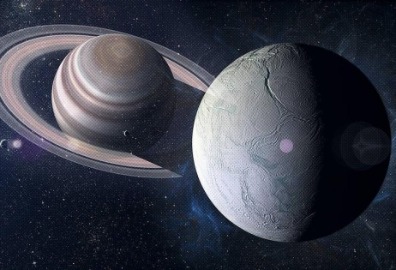
By observing the seismic vibrations of Saturn's rings, astronomers have come to the conclusion that its nucleus has no definite boundary. This is also characteristic of Jupiter. The discovery revealed that Saturn's crust produces an unusually large amount of heat. The study was published in the journal Nature Astronomy.
According to the TASS news agency, the measurements obtained with the help of Cassini devices can be explained by the fact that the nucleus of Saturn extends 60 percent of the radius of the planet, and it does not have an exact boundary. This structure explains why Saturn's crust generates an unusually large amount of heat.
Jupiter, Saturn and other giant planets in the solar system are composed mainly of hydrogen and helium, as well as various hydrocarbons, ammonia, water and other simple substances. Scientists have long wondered whether these planets have a specific nucleus and what their composition and properties are.
The first measurements made with the help of the Juno probe, which entered the Jupiter system in the middle of the last decade, showed the existence of a nucleus on the largest planet in the solar system. At the same time, scientists have found evidence that the nucleus has an inaccurate boundary and an extremely unusual structure.
This structure of Jupiter's crust came as a surprise to planetologists, who thought that the nucleus was in the form of a spherical and rocky body covered with a metallic hydrogen layer. A team of planetologists led by Professor Jim Fuller of the California Institute of Technology has discovered that such an unusual structure of the nucleus is also characteristic of Saturn, the second largest planet in the solar system.
Planetary scientists have come to this conclusion by analyzing the data collected by the Cassini probe while observing the structure and properties of Saturn's rings. Scientists explain that Saturn's rings are constantly interacting with each other, with neighboring satellites and the giant planet itself. These processes cause different types of seismic waves. These waves travel along the rings and change their appearance significantly, as the Cassini probe has repeatedly witnessed.
Analyzing these vibrations, Professor Fuller and his colleagues believe that they can be used not only to search for Saturn's micro-satellites that we have not seen, but also to assess how the properties of the giant planet's nucleus and mantle affect the nature of its gravitational interactions with rings. Based on these assumptions, planetologists have tried to create a computer model of Saturn's crust that can replicate the relevant data collected by Cassini.
Calculations unexpectedly showed that Saturn's nucleus does not have a specific exact boundary, but at the same time, its mass and size are quite large. In this respect, it is 55 times larger than Earth and has a radius of 35,000 kilometers.
Fuller and his colleagues note that such a structure of Saturn's nucleus explains several unusual features of the planet at the same time, including the abnormally large amount of heat generated by its crust, as well as some of the nature of the flow of matter inside the gas giant.
The similar nature of the nuclei of Jupiter and Saturn indicates that generally accepted theories about the formation of gas giants do not explain all the structural features of these planets.
According to planetary scientists, the next study of Jupiter and the sending of new missions to Saturn will eliminate this shortcoming.